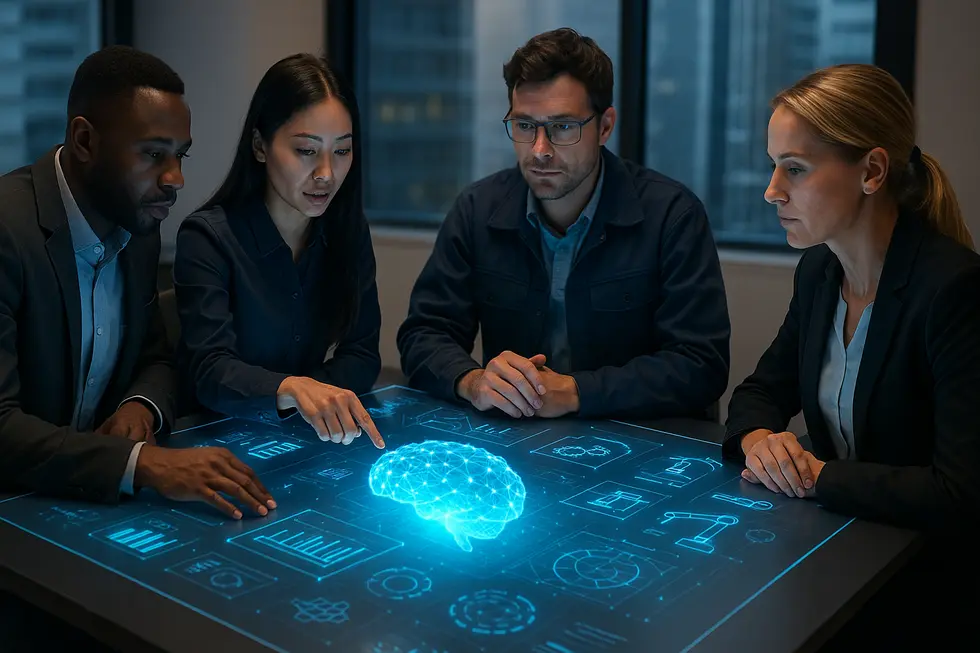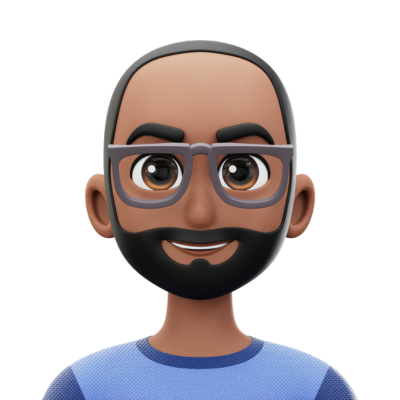How AI Became the New Standard: Transforming Industries and Unlocking Business Growth

Artificial intelligence has quietly but decisively shifted from futuristic speculation into an essential pillar of modern industries. By 2025, approximately 75% of companies worldwide had integrated generative AI technologies into their core operations—an impressive climb from 55% just a year earlier. This rapid adoption signals that AI is no longer an optional tool but the new operational baseline reshaping how businesses function across sectors.
The industries spearheading this widespread integration include healthcare, finance, telecommunications, media, manufacturing, retail, and many others. What unites them is a common factor: the generation of vast volumes of both structured and unstructured data. AI algorithms thrive on such data richness, which fuels advanced model training and delivers actionable insights that spur smarter decision-making, optimize processes, and refine customer experiences. For instance, telecommunications companies anticipate a staggering $4.7 trillion in gross value added by 2035 through AI-driven enhancements such as network optimization, security fortification, predictive maintenance, and personalized customer interactions.
Simultaneously, highly regulated and data-intensive fields like financial services and healthcare stand out as top AI investors. These industries leverage AI for complex analytics—identifying fraud, managing risks, and tailoring patient care with unprecedented precision. Such deep integration showcases AI’s adaptability not just as an automation tool but as a strategic enabler transforming workflows and improving outcomes.
Crucially, the corporate impact of AI adoption is not uniform. Companies that embed AI within a clear strategic framework see their likelihood of revenue growth double compared to those implementing AI in a piecemeal or reactive manner. This highlights that successful AI deployment demands more than just technology acquisition. It requires committed leadership, cultural alignment, and thoughtful integration into existing operational models. When these elements align, AI becomes a catalyst for operational excellence, innovation, and sustained competitive advantage.
Globally, the AI market reinforces this narrative. Valued at $391 billion in 2025, forecasts project its worth soaring to $1.81 trillion by 2030—driven by expansive enterprise adoption and increasing sophistication of AI solutions. This trajectory firmly positions AI not as a transient trend but as a foundational technology propelling business transformation worldwide.
While excitement about generative AI’s potential to revolutionize functions is high, many organizations face the challenge of moving beyond bolt-on applications toward seamless, strategic embedding within their processes. This deeper integration unlocks full value, enabling AI to evolve from supplementary automation to a core driver of strategic decisions and innovation.
Beyond operational improvements, AI’s widespread adoption redefines workforce dynamics. Rather than wholesale replacement, AI automates repetitive tasks, freeing human professionals to focus on complex, creative, and supervisory roles. This complementary relationship fosters innovation and reshapes skill requirements across industries.
In essence, today’s AI landscape is a testament to how quickly transformative technologies become indispensable standards. Far from a speculative future, AI is undeniably the new bedrock of business strategy and growth. Embracing AI with clear intent and integration is proving to be the defining factor for organizations ready to thrive in the evolving digital economy.
For more comprehensive insights on industry-specific AI trends and their strategic impacts, the Coherent Solutions report on 2025 Global Industry Adoption offers valuable analysis.
This chapter connects tightly to the broader conversation by showing that AI’s widespread integration is not just about technology adoption, but about embracing a new, data-driven standard that unleashes growth potential and operational innovation across the modern business landscape.
Embracing the New Standard: How AI Enhances Jobs and Creativity Without Replacing Humans

Artificial intelligence is no longer a distant dream or a speculative technology reserved for sci-fi. It has become the backbone of many industries, setting a new standard for how work is done and how creativity is expressed. Instead of a force that displaces workers or stifles imagination, AI mainly serves as a powerful enabler—automating routine tasks and amplifying human potential.
Workplaces today are rapidly integrating AI tools that take on repetitive or rules-based duties. Tasks such as data entry, initial customer inquiries, or basic analytics can now be handled more efficiently by AI systems. This relieves employees from mundane chores, allowing them to focus on tasks requiring emotional intelligence, complex problem-solving, and strategic thinking. Far from replacing humans, AI creates room for workers to apply their uniquely human skills — such as design thinking, leadership, empathy, and nuanced judgment — in ways that machines cannot replicate.
Emerging job roles exemplify this shift. Positions like AI Engineer, Prompt Engineer, and AI Content Creator are in high demand, blending technical knowledge with creative insight. These hybrid jobs illustrate how AI literacy is becoming as essential as traditional skills. Understanding how to collaborate effectively with AI equips workers to leverage its capabilities, ultimately increasing productivity and innovation.
Creative fields face their own challenges and opportunities with AI. Generative AI, capable of producing content, art, and designs, has understandably caused concern among freelancers and creators about fair compensation and the value of original work. While this disruption raises important questions about intellectual property rights, it does not herald the end of creativity. Instead, it calls for updated frameworks that protect creators and recognize the complementary role of AI in enhancing—not supplanting—human ingenuity.
Companies increasingly seek employees who can guide AI systems ethically and effectively. This means roles that require communication, collaboration, and leadership grow more valuable. AI tools function best when overseen by professionals able to provide context, ethical considerations, and innovative ideas. These human elements remain central to the future of work.
Adapting to this new landscape requires embracing AI fluency alongside cultivating interpersonal and strategic skills. Workers who combine these competencies position themselves not just to survive but to thrive. Educational programs and training focusing on AI integration and human-machine collaboration are vital to prepare the workforce for this transition.
Moreover, automation primarily impacts routine, repetitive jobs, while creative and complex roles remain secure and increasingly important. This dynamic encourages a workforce that is both technologically savvy and deeply creative, embodying a standard that demands more from every individual.
For organizations, this means fostering cultures that embrace AI as a tool for empowerment rather than a threat. It aligns perfectly with the notion of scaling systems, not headcount, which supports operational efficiency without sacrificing human contribution.
For a thorough understanding of how AI is driving job growth and reshaping skill demands, especially in design and manufacturing sectors, Autodesk’s 2025 report on “AI Job Growth in Design and Make” offers invaluable insights.
Ultimately, AI’s impact on jobs and creativity is transformative but not alarming. Instead of fearing displacement, we should recognize AI as a catalyst for raising the bar on human achievement, enabling professionals across industries to reach new heights of innovation and productivity.
For businesses aiming to adapt successfully, cultivating an AI-ready culture that balances automation with human skill is essential. Strategies for doing this are explored more in our discussion on scaling systems without increasing headcount.
Final thoughts
In conclusion, AI is more than a futuristic concept; it is the new industry standard that stands to revolutionize efficiency and empower human creativity. For business owners and decision-makers, the key is not to fear this change but to embrace the opportunities it presents. By pairing AI technologies with human expertise, businesses can drive growth, innovation, and remain competitive in a rapidly evolving landscape.
Not sure where to start? Browse all our AI Agents and discover what’s possible with vaiaverse Level 2.
About us
vaiaverse is the home of next-generation AI agents – digital employees that handle real business tasks across lead generation, sales, and customer support. Whether it’s qualifying leads by phone, answering common questions over WhatsApp, or managing follow-ups by email, our ready-made and bespoke AI Agents are built to save time, cut costs, and scale your operations without hiring. From simple drag-and-drop onboarding to advanced AI teams with SLAs – vaiaverse offers flexible solutions for companies ready to automate what slows them down and double down on what drives growth.









